„¡Todo bien, bienvenido a Paraguay y buen viaje amigo!“ We‘re off, following 15min of filling in the TIP together with the Aduanas officer. It was really easy in the end. All it took was some time, humor & chatting.
We’re heading West towards Curuguaty. Paraguayans are super friendly, very curious & always up for a chat. Those that speak Castellano (= Spanish) are easy to understand here. Many, however, speak Guaraní (=Native Language) or a mix of the two. Somehow it’s still always possible to have a conversation though.
When riding it’s freezing cold today. It’s rainy & windy. The last 50km I can’t really feel my fingers anymore & pull the clutch lever using my full hand, simply pulling the lever by moving my arm backwards. We arrive at Curuguaty & pull in at a Petrobras station. At many petrol stations empenadas are freshly made. Usually, the delicious smell of freshly baked empenadas allures you to buying at least one. The best empenadas so far are to be found in Paraguay.
A night in Curuguaty & we continue taking the backtracks. It hasn’t rained since yesterday afternoon, however, the track is muddy & getting worse every meter. I get some information from locals that the track is like this for another 80-100km. Additionally, it looks like it’s raining further ahead. This would make progressing much more challenging. I decide to turn around & ride 60km back to a better road. Always challenging to reach the decision of turning around. I’ve regretted not turning around quite a few times. This time won’t be one of them. Back to the petrol station to grab freshly baked empenadas for lunch.

We’re heading South towards Rio Iguazu. Although Paraguay generally is super flat, we’re now cruising up a little hill in no-man’s-land. Four police officers stationed on top. They wave us down. There only being a car passing every 10min or so, the odds of being stopped are high. We chat for 15min. They ask plenty of questions & we’re having a pleasant conversation. Finally, they ask me how I pay for things. I answer: “Strictly always by credit card in order to assure that I don’t unnecessarily lose money”. They laugh & send the Husky & me further South.
One more chat with the police 5km before our destination, a camping directly at Rio Iguazu. The police in Paraguy has a notorious reputation among travelers. Blogs & chats are riddled with stories of corruption & the need for bribing. This time we talk for 5min & the Husky & I are off. All it seems to take is a friendly chat.






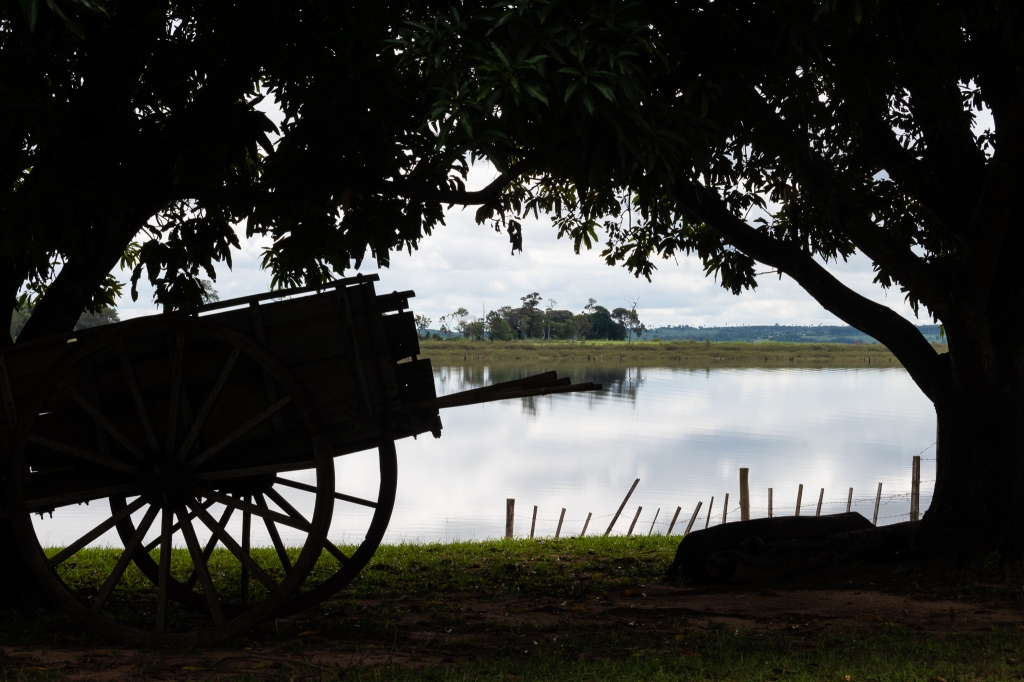



I’ve decided not to visit Iguazu falls. This although they are only 200km away & probably the biggest tourist attraction in Paraguay. I’ve seen Niagara & Victoria falls. Entry tickets are around USD 20-25.-, which is a staggering amount relative to local price levels. This tourist attraction is crowded with people. I usually don’t enjoy this type of place to much. I’ve come to learn that it’s not the biggest waterfalls which are the most beautiful ones. I prefer the ones at the end of a footpath, in the middle of nature with no one around. I’ll pass on this one. We’re on our way to Asunción, the capital city of Paraguay.


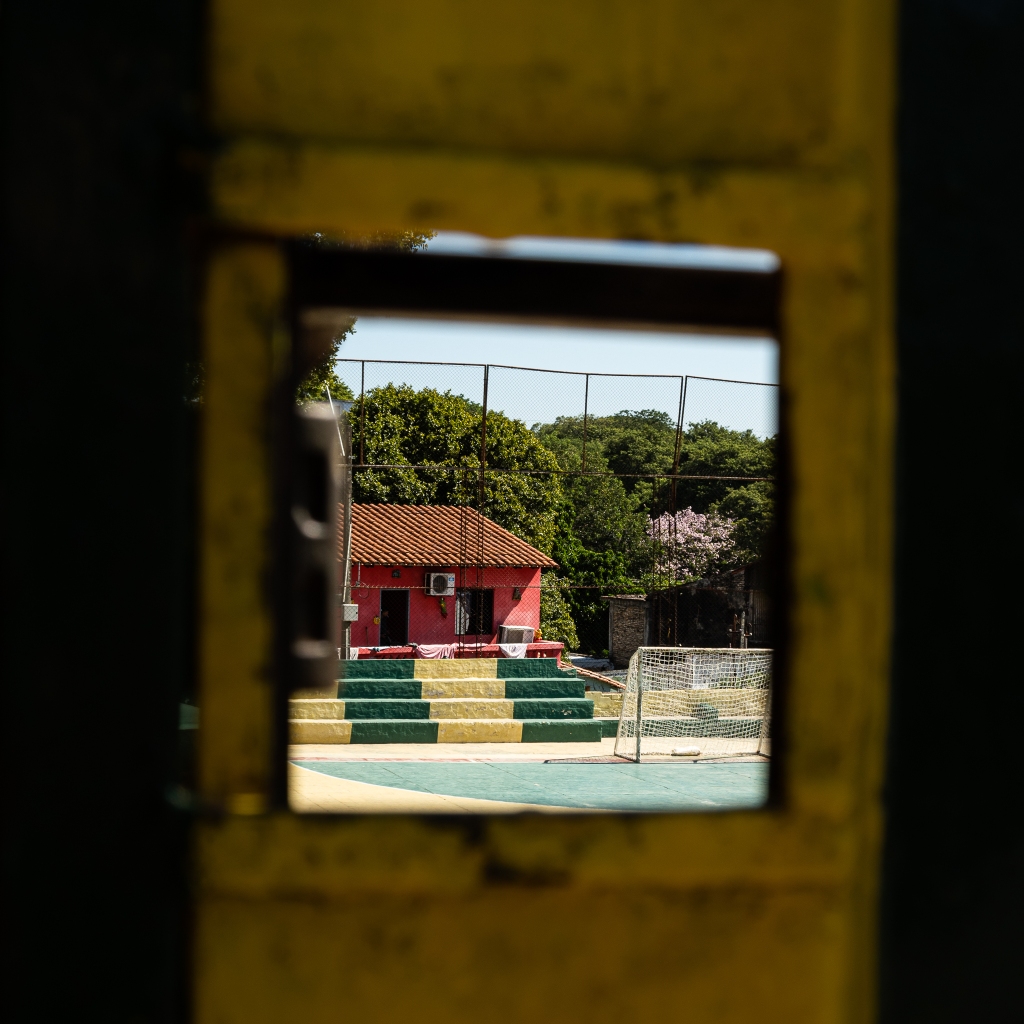

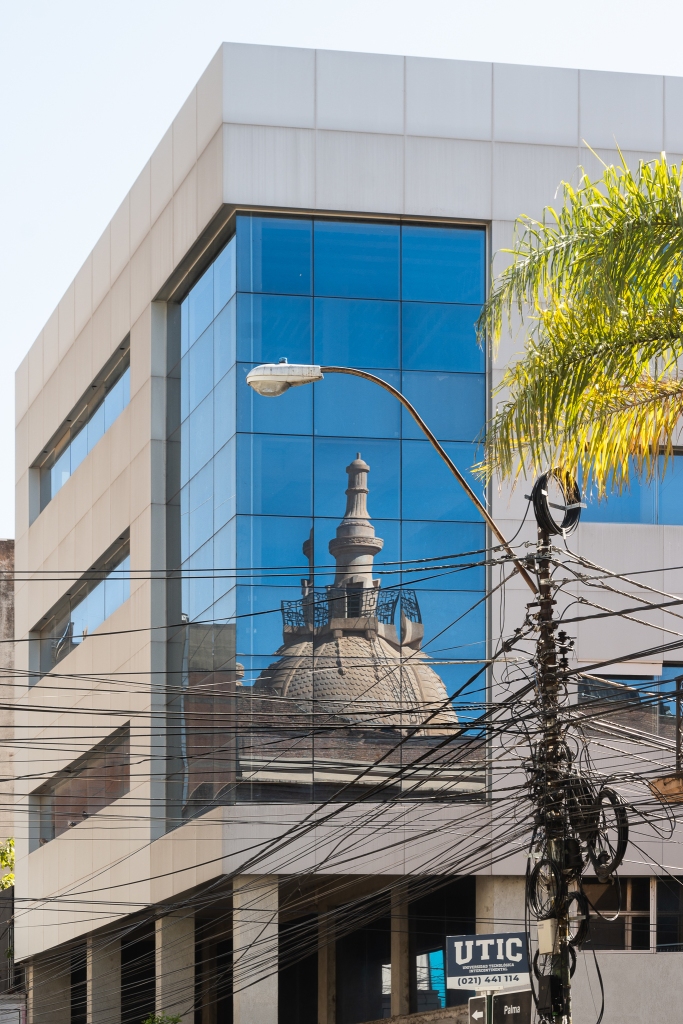
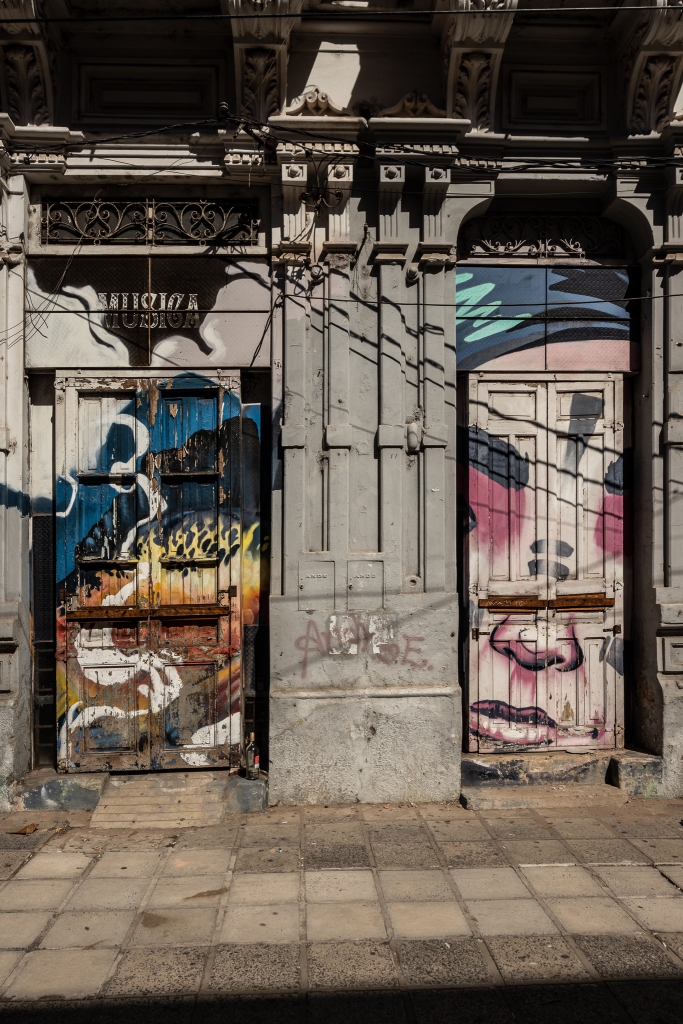

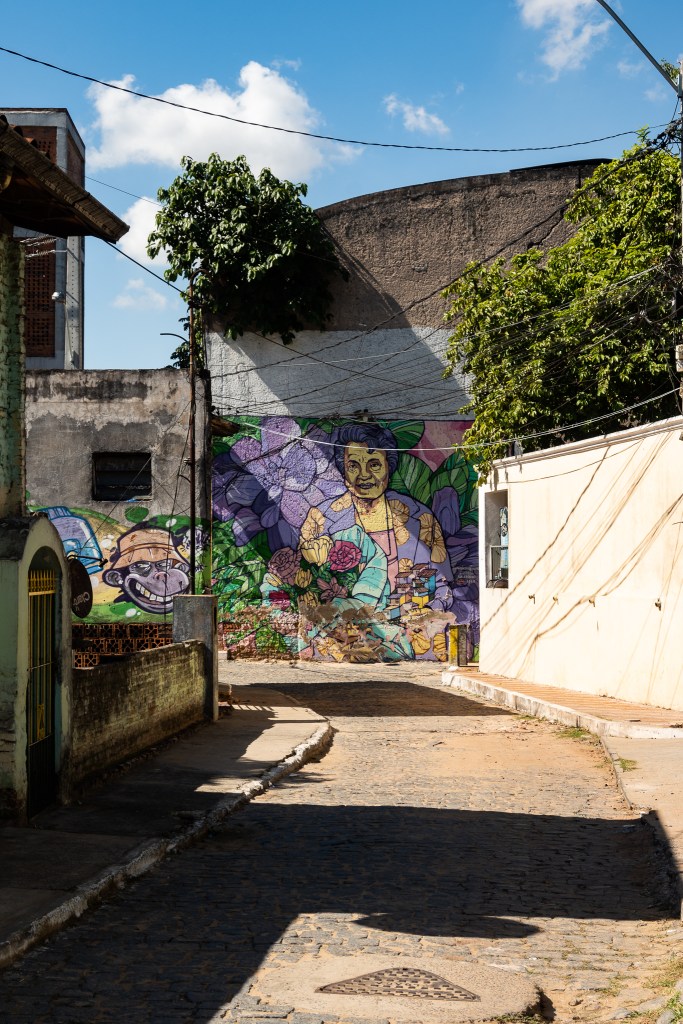


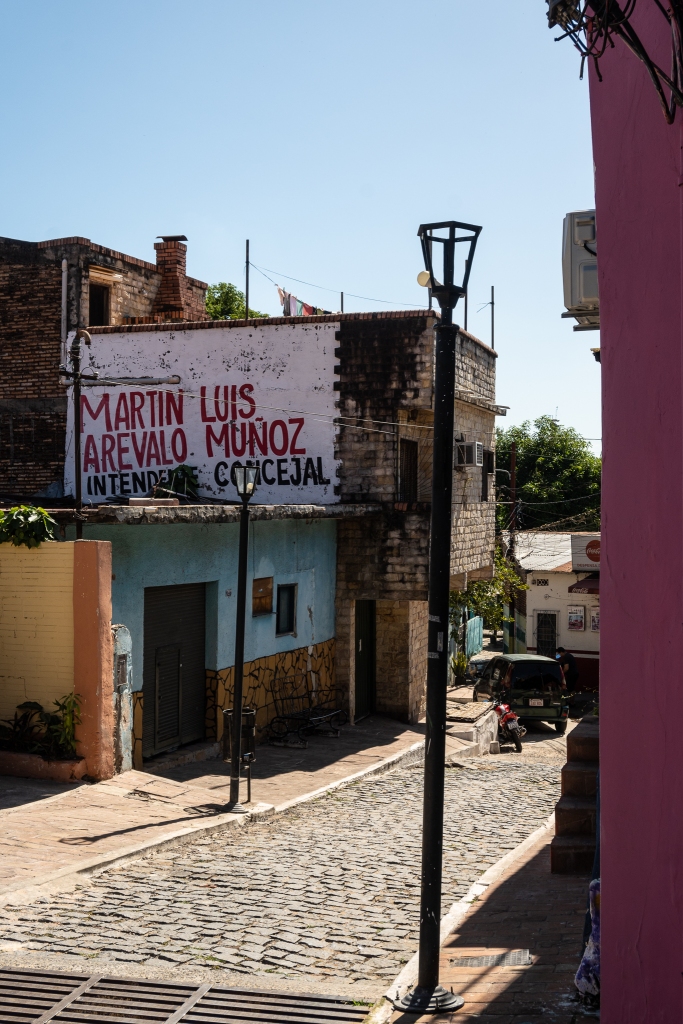






The Husky’s clutch disks should last another few thousand km, but I have the feeling it would be better to carry a replacement clutch kit from here. I suppose listening to you’re gut feeling is a thing you learn when traveling. There is a KTM dealer in town but the odds of them stocking any spare parts are meager. Especially parts for KTM 690’s (same engine as the Husky) are rare. This bike is not very common in South America. I first hesitate but then decide to drop in at the dealer before departing. To my astonishment they have one clutch kit on stock. The police in Asunción has a few KTM 690’s. This is why they keep one clutch kit on stock. I get this one for the Husky.
We cruise West. We’re fueling up & taking a break in Mariscal, while chatting with the gas station attendant & a trucker. They tell me that there is a Swiss colony named Rosaleda just 25km off the main road. I’m curious & we head out there.
This is a settlement of a few Estancia-like (=Ranch-like) properties in the middle of bush lands. I’m greeted by Renato Gerber at Rosaleda Resort. 25 people of Swiss & German decent live here. Founded in the late 90’s, initially 68 people from Switzerland had moved here. Many gave up & returned home. However, a few have decided to stay. I hear many interesting stories, enjoy delicious food & tidy up the Husky a bit.
While Swiss colonies are not very common around Paraguay, German, Canadian & especially Mennonite ones are. Mennonites of Russian, German & American decent are very present here & economically successful. They are the driving force in the agricultural sector & many, therefore, own large lands. Some tension between the natives & these farmers seems to be developing. I do hope that things don’t develop into a direction as they have in other countries which are/were in a similar situation.






Flat landscapes, endless straight roads, sand, bush & palm trees. Time to move on to Bolivia. Many had told me that Paraguay is not worth traveling. Although the landscapes are monotone, the friendly & chatty people of Paraguay more then make up for it. I’m glad we passed through this unique & highly likeable country.
The Husky is becoming unusually loud. She is sputtering a lot. We’ve lost a carbon cover sealing the muffler. The bolts have broken & the silencer is about to fall out. I find two suitable screws to fasten the silencer. A quick fix; we’ll take care of it in Bolivia. We rattle & sputter towards the border in “Mayor Infante Rivarola”.
Before I actually enter the building, the Bolivian immigration officer asks me where I’m from & if I’m vaccinated. She first thinks I’m American. These two countries have a tense relationship. Bolivia is one of the main Cocaine producing countries & has many emigrants to the US. A visa is required for US citizens to enter. I receive my entry stamp within 10min. The Aduanas officer also processes the Husky’s TIP within 10min & repeatedly tells me that the TIP can be extended any time without any payment needed. A few km further we register with the military & head towards “Villamontes”. “¡Bienvenido a Bolivia!”



I ask around town for a good mechanic & end up at Carlitos’ workshop. Carlitos asks how I’d like the muffler to be repaired. I say:”I suggest we replace the fiber, seal the muffler with high-temperature silicone & fasten it with new bolts”. He agrees, adding that he was thinking of doing exactly that. I’ve learned how things are fixed around here. Not the perfect solution, but it will work. We ride around town on his 30y old Honda 250 & buy fiber & bolts. 2h later I’ve reinstalled the muffler & we’re set to continue in a more civilized manner.




Bold mountains tower behind Villamontes. We’re now switching from flat & straight paved roads to hilly & curvy sand tracks. We’re looking forward to it. We ride through to “Entre Rios” to settle at “Sol Luna Guesthouse” for the night. The ride was dusty, though beautiful & great fun. It’s good to be back in our type of terrain.


Astrid, Torge & their three dogs greet us at the guesthouse. They emigrated to Bolivia from Germany 20y ago & now run this cozy guesthouse. I spend the evening at a fire with Torge & his Bolivian friend Antonio. We philosophize for hours. I learn plenty about Bolivia & complement my Spanish vocabulary. Always a different to learn about a country through locals.



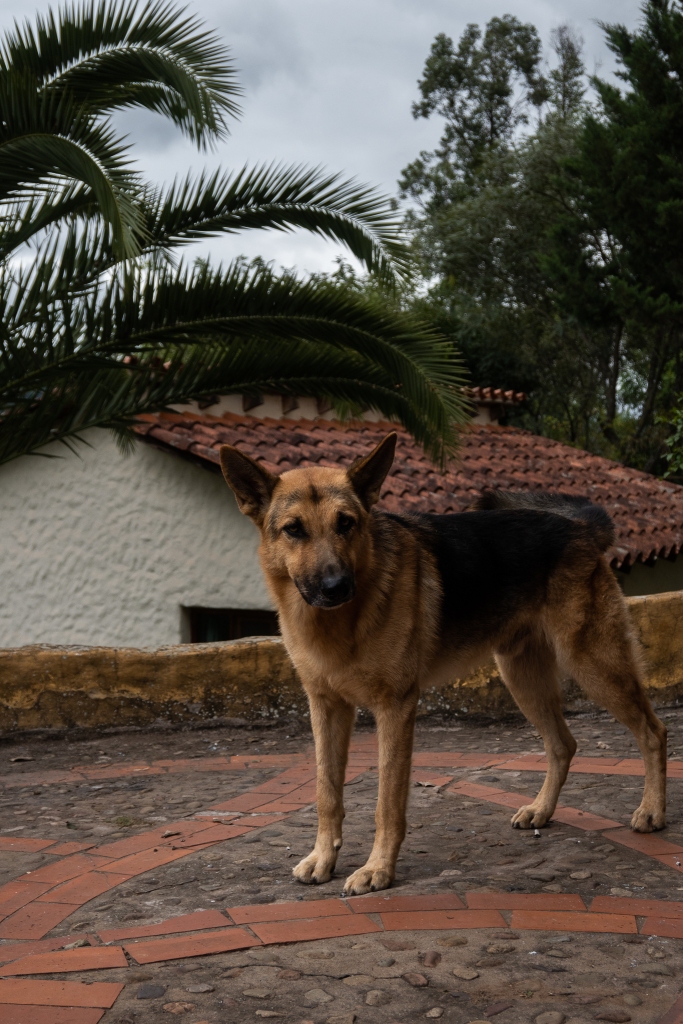


The next day Torge & I head out to town for lunch. A full menu incl. Soup, a main course & a drink goes for BOB 15.- (Bolivianos). This equals to CHF 2.10. It’s not a touristy area & accordingly local prices are the norm. The food has not only become unimaginably cheap but is also absolutely delicious.
The location is peaceful & Astrid & Torge excellent hosts. I decide to stay another day & get a zipper replaced on my motorcycle pants. I walk to town with Jack (one of the dogs). We fight off packs of dogs trying to intimidate us on our way. While the tailor replaces the zipper, Jack & wander the village, buying some goods & chatting with locals. The tailor charges me BOB 15.-. Incredible how affordable labor is here.






We target Tupiza, passing through Tarija. One of the things all overlanders dread in Bolivia is buying fuel. Although its currently available & really quite affordable @ BOB 3.76 per liter (CHF 0.52), there is a catch. This price only applies to Bolivians. Foreigners (vehicles with foreign license plates) are to pay BOB 8.85 (CHF 1.22) as fuel is heavily subsidized by the state. The price not really being the issue, the bureaucracy involved with it is. Petrol stations are hesitant to fuel up foreign vehicles as it involves a “special process”.
In Villamontes I had fueled up the Husky paying the local price w/o an issue. In Tarija, Daniel (petrol station attendant) suggests I go to another petrol station as he doesn’t understand the special process. After some chatting he suggests to register the purchase to his vehicle & I fuel up @ the local price.
We ride perfect roads & a sand track through stunning landscapes towards Tupiza. At one point I take a break & notice that I have been breathing a bit more heavily than usual. Upon checking the GPS, I realize that we’re at 4’200m above sea level.






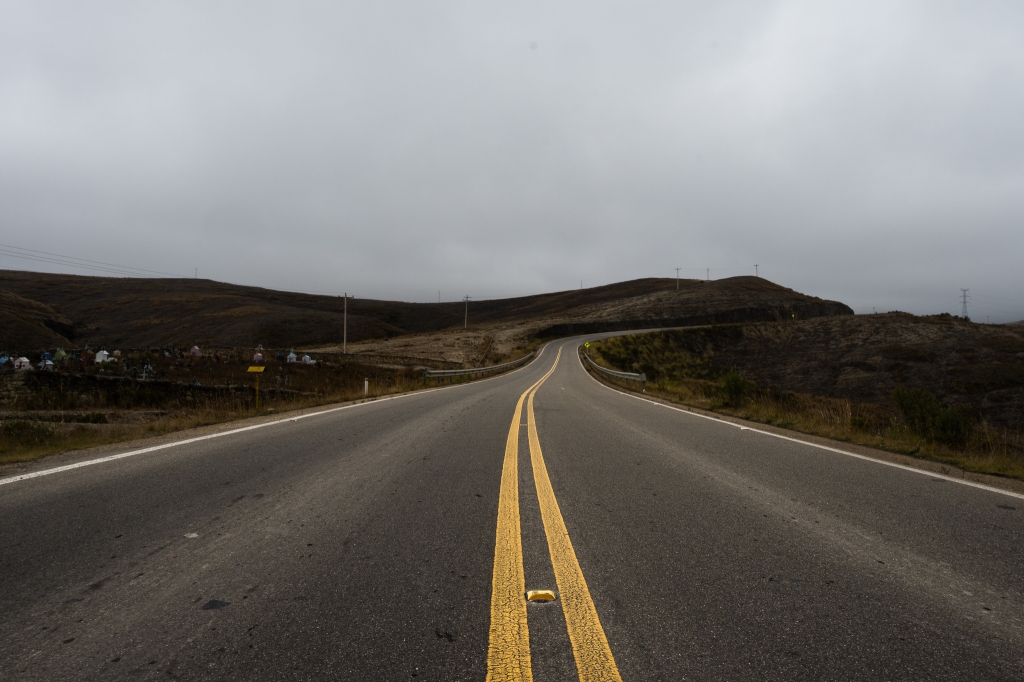
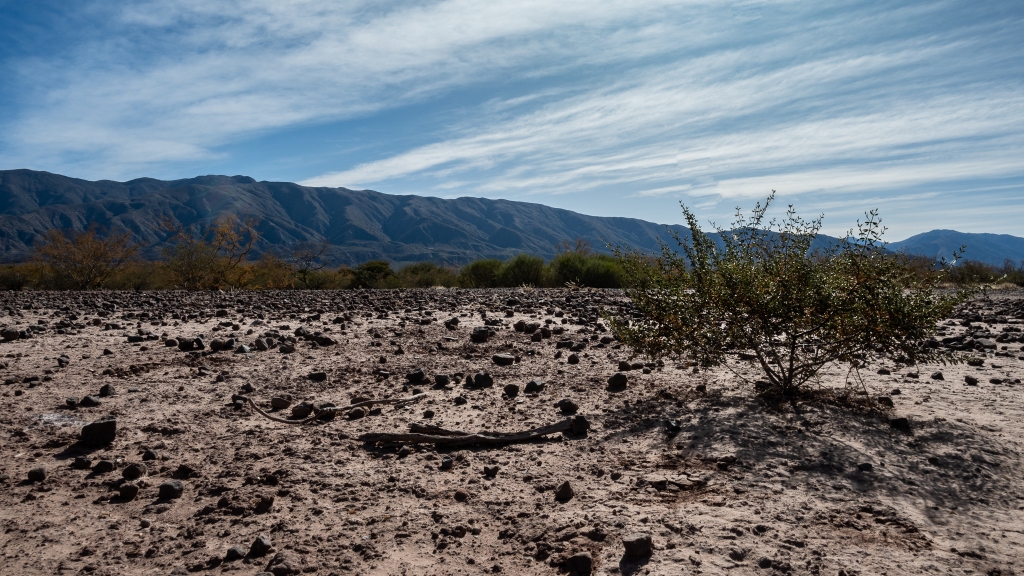
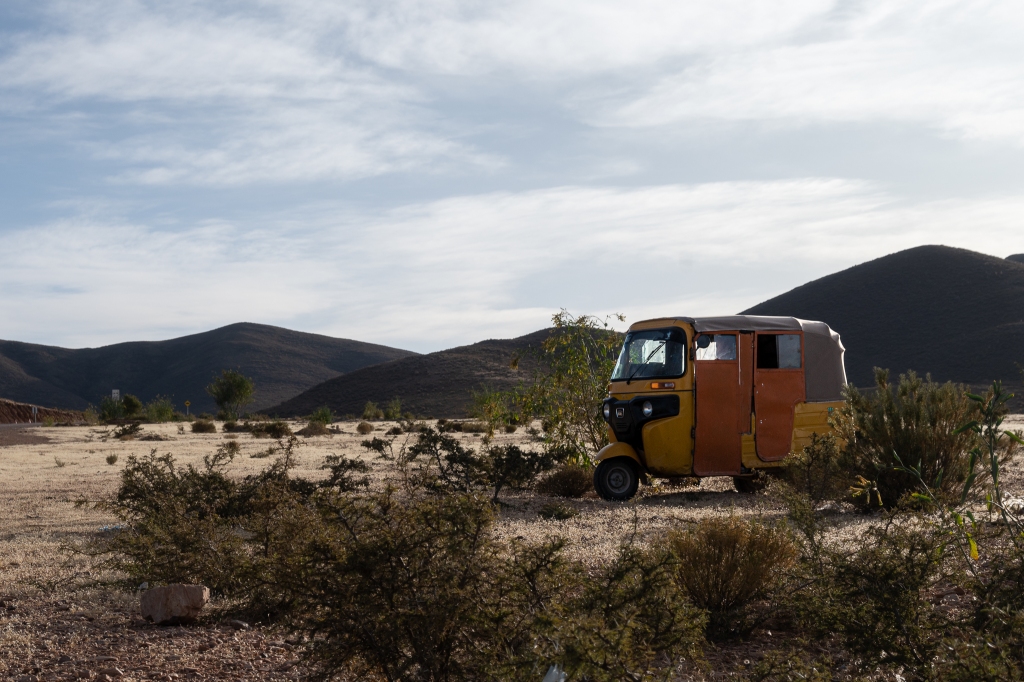
We arrive in Tupiza & I make a plan for the continuation of our journey. I wish to see “Laguna Colorada”. There are two ways of getting there; a long detour through Uyuni, ~80% of which are easily passable roads or the direct way. ~80% of the direct way encompass crossing rocks, sand, gravel & mountains up to 5’000m above sea.
All travelers & online information have indicted me that second option is hardly passable due to the horrible state of roads & the non-existence of petrol stations. I’ll spend a day here & do some research.








I talk to the owner of the hostel. He tells me that the Husky & I should be able to do the direct way. He calls a friend that organizes tours in this area. Hernán shows up in his Landcruiser 10min later. We make a plan & Hernán openly provides me with all the information needed. Upon asking him what I can give him for his efforts, he answers “¡Por favor Rico; buen viaje!”.

In the evening I decide to fuel up the Husky as we’ll be leaving early tomorrow. A long queue at the petrol station. Luckily the queue is for diesel, as this is scarce around Argentina & Bolivia at the moment. Diesel is imported from Argentina. Currently, less is being exported to Bolivia.
We skip the queue & target the pump. The lady at the pump tells us to switch to the other pump (same petrol station) as she’s not familiar with the special process. We move to the next pump. Here a woman is fueling up an ambulance. She secretively gives us a signal to sneak up behind the ambulance & hide between the pump & the ambulance. She directly switches from the ambulance to the Husky & fuels us up. I pay the local price in cash. She asks us to turn around & leave as if nothing had happened. All very secretive & rushed. However, this gesture couldn’t be kinder. We’re now set to continue.
Getting up in the early morning, I hear drums, fireworks & chanting in town. Today is protest day. Roads from & to town are blocked by protesters. This is a common practice in Bolivia & seems to irritate most overlanders. It can seem annoying, but there are reasons behind this practice. Apparently, roads are built/improved to areas of the country where resources can be retrieved. Very little to none of the returns on these resources are reinvested into the areas where the resources stem from. The funds are generally reinvested in the bigger cities and/or parish. By interrupting the supply of resources, these people are simply ensuring that they are not forgotten.
We’ll give it a try to get through town & get off the beaten track. We circle around the back of town & arrive at the main road. Talking to the protesters, I find out that there is no chance of riding through town. Crossing the bridge across “Rio Tupiza” in town is not permitted. Apparently, there is a pedestrian bridge a bit further back though & we’ll give that option a try.
We’re across the river & arrive at the next barricade. This is a fix installed barrier, ready to be closed for protest any time. A group of women is guarding it. They welcome me “Hola amigo!”. We’re welcomed in the most friendly way & I have a chat with these women. There is no way this barrier will be opened today. However, were permitted to squeeze through the bush next to the barrier. They send us off with the best of wishes.
Entering the rougher tracks we blast pass a row of Landcruisers ready to haul tourists on a 4 day tour through this apparently impassable terrain. We’re flying up the mountains. We’re having a great time. A first stop to take a picture 20km after departure. We’re now riding in a wobbly manner. The Husky has suffered a puncture in the rear.
All the Landcruisers are catching up. I’m starting to repair the tire & surrounded by drivers who are taking a break while their passengers are taking pictures. A lot of empathy & willingness to help. Everyone seems to know how to get the job done best. The good thing is that one driver has tire irons with a longer lever than mine. We get the tire of the rim quite quickly. This is not an easy job as the Husky’s Mitas tires are extremely tough (4-plied walls). Especially as they only have approximately 5’000km on them.
The Landcruisers cruise on & we’re left to repair the tube. After repairing the tube, getting the tire back on is quite a task. It’s tiring, after all we’re at 3’8000m above sea. How did we manage to pick up a nail like this in the middle of nowhere? Heavy breathing, plenty of sweat, bruised fingers. It’s now 2h later & we’ll have to return to Tupiza. Too late to make it to a suitable location to stay. I’m following Hernán’s advice. Temperature go down to -20° Celsius around here at night. I’m well equipped but not for these conditions.
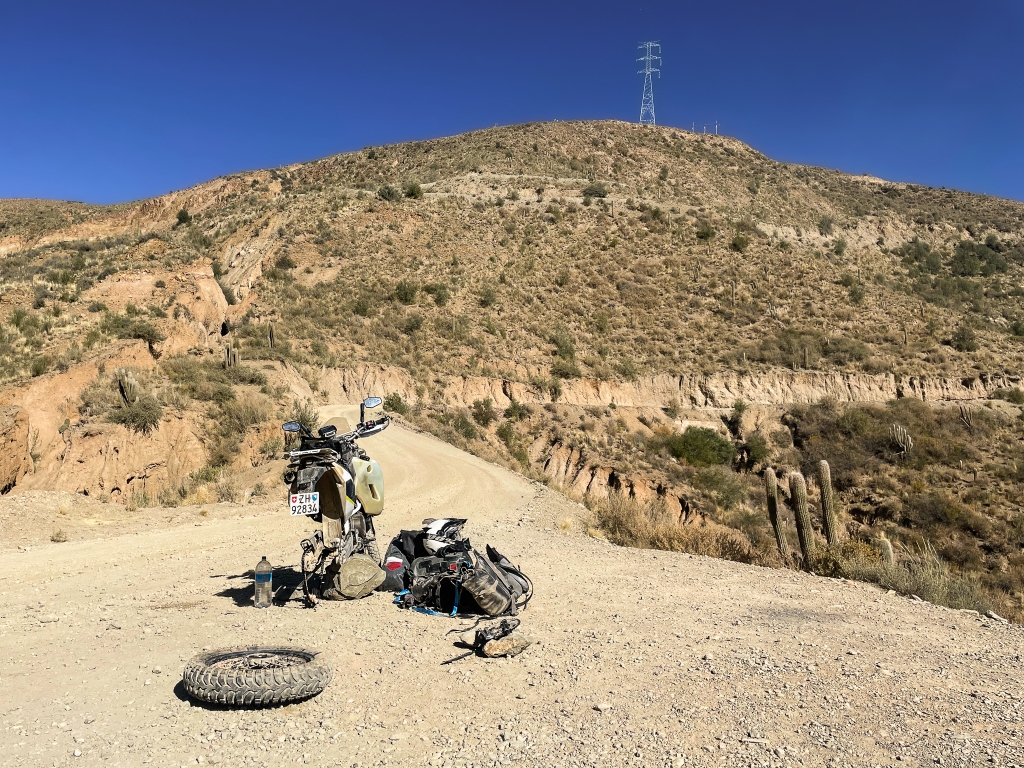



We ride back down to civilization. Back to the barrier. The bush we had squeezed though is now blocked with rocks and branches. No way of getting through there. The protesters welcome us back with a lot of empathy. No way of getting past the barrier or through the bush. Now we’re permitted to jump up on a decommissioned train track & make our way back to town. Tomorrow will be a new day.
Second attempt. No barricades, no hindrances, no one around. Also no friendly encounters. We fly up the mountains again. We pass the point that stopped us yesterday. Now we’re going all the way. Off we are into no-man’s-land.
One-lane sand tracks covered with stones. A stroll in the park for the Husky. There are still trucks & buses coming our way. Sometimes it’s simply non-comprehensible how the trucks & buses make their way through some of the softer sand & river parts, but they do. It’s becoming easy to be distracted from riding by the indescribable beauty of the landscapes. I already know I won’t be able to do these landscapes justice with my photography.


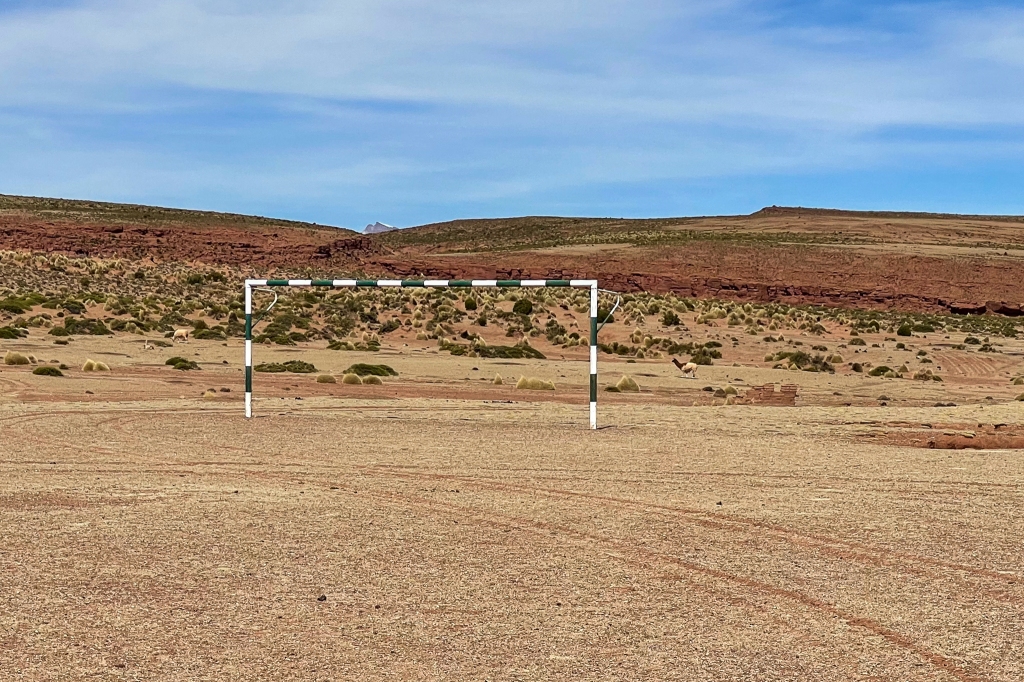









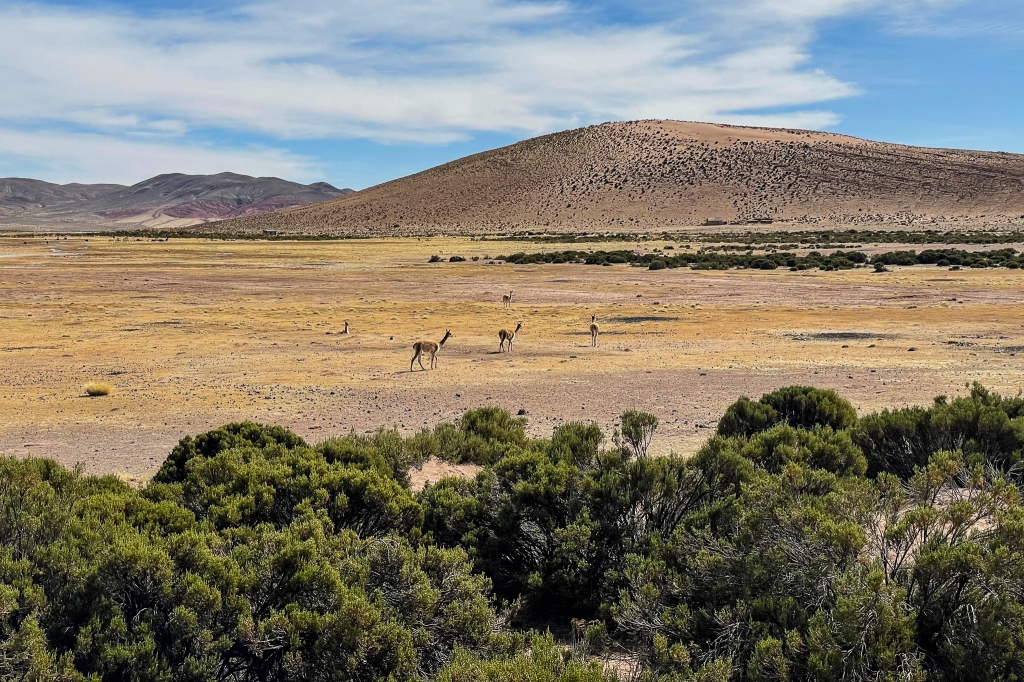
The first >100km have been an easy ride. Although a bit of a labyrinth, we have found the right path until now. It is now that we take a wrong turn & follow the nicer track. It’s not always the good tracks that get you to the right destination. We’re now heading in the direction of an area marked with “NO” on our plan.
I get some bad information in a town & we continue on a wrong track. What adds to the complexity of navigating here is that there are several settlements with the same names. Although there are only very few villages around, there is i.e. more than one “San Antonio” & “San Pablo”. The landscapes are exceptionally beautiful, but the tracks are becoming increasingly worse. The sun is setting. We circle back to a town we had passed through over an hour ago.
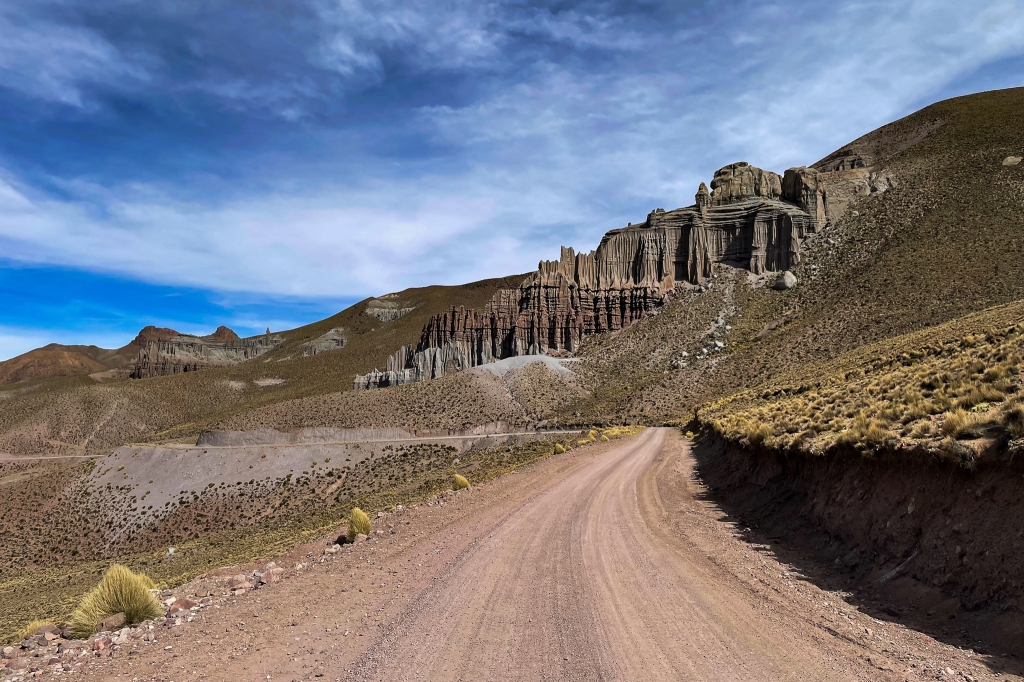








We’ve made it back to town shortly before sunset. You really don’t want to be riding in the dark in this area. The tracks are rough & the risk of crashing much higher at night. Alpacas, donkeys & people wander on the tracks & are difficult to spot. Temperatures sink rapidly as soon as the sun sets. Ideally one plans to arrive 2-3h at the destination before sunset in order to have some buffer in case of emergencies. Our plan didn’t work out today.
We settle for an early dinner, now paying BOB 10.- (CHF 1.40) for a meal. I manage to organize an unheated room w/o shower or internet for BOB 40.- (CHF 5.60). It’s cold but I’m perfectly happy to have some shelter from the wind & the freezing temperatures outside.
We’ve been traveling between 4’000 – 5’000m above sea. We slept at 4’200m. The Husky struggles to get running in the morning. Not only is the air thin & temperatures have gone down to -15° Celsius at night, but also the quality of the gasoline here is subpar. You don’t really know, but it’s said that its 85 Octane or lower & potentially not very pure. The Husky doesn’t like it. It takes quite a few attempts to get her running.
At breakfast I chat with some locals & find out where to buy fuel in this little settlement. There are no petrol stations for 100’s of km & fuel is purchased out of jerry cans from small shops. However, one must know which shops sell gasoline as they don’t have signs. The lady running the restaurant sells me 10L for BOB 6.- (CHF 0.85) per liter. We still have enough fuel but I will take every opportunity I get to buy some some. Due to the limited availability, it’s easier to buy it in small amounts than to fuel up completely in one go.


We’re back on the right track. Jaw dropping views all the way. These landscapes look like paintings. Progress is slow as I stop regularly to take pictures & breaks. At these altitudes traveling is not only tiring due to lower oxygen levels, but the air is also very dry. My throat is constantly sore & my lips cracked allover. Although not experiencing any altitude sickness, when moving too hastily, I do occasionally feel a little dizzy.
This now definitely is 4×4 territory. We cross through stretches of deep sand & several rivers. Most rivers are surrounded by snow & have a layer of ice on them. Occasionally, I scoop some ice water into my boots when crossing the deeper rivers. Some of the reports I have read on this stretch are from overlanders crossing this area during rain season. Something I surely wouldn’t recommend. The rivers are much deeper, wider & have a stronger current. The tracks much rougher & potentially even more washed out. Now during dry season it’s a piece of cake for the Husky though.


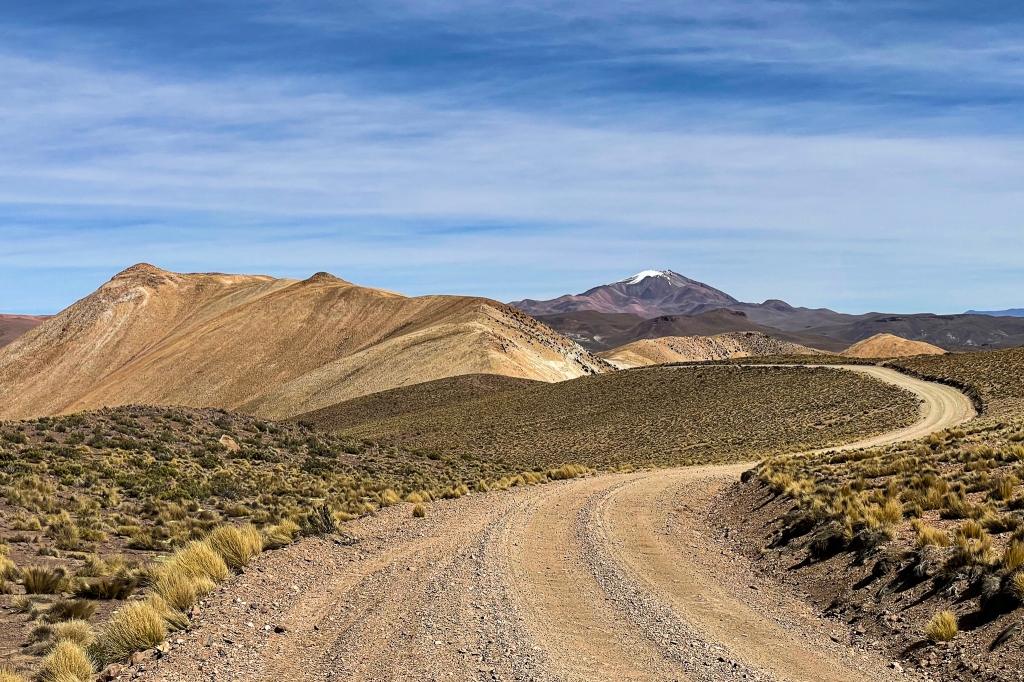

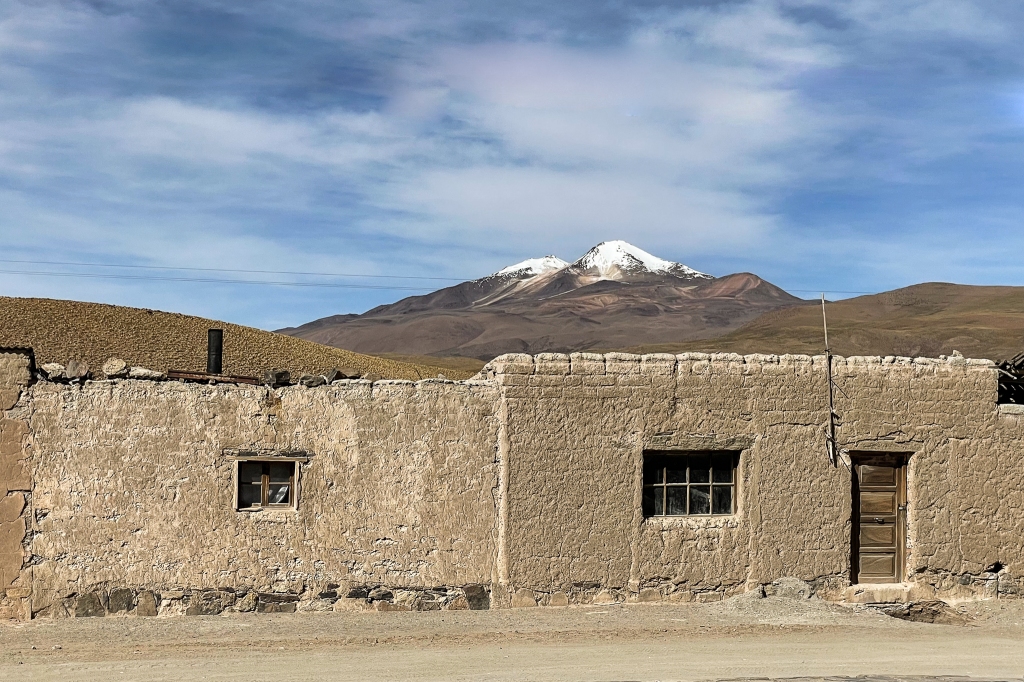









Arrival at “Laguna Colorada”, 4’400m above sea. The lagoon really is as red as stories tell. The color comes from some red sediments & the pigmentation of algae. Flamingos populate the lagoon, which is otherwise surrounded by desert & mountains. We target the settlement 7km next to it to find a room for the night.




A bed in an unheated room with shared cold showers goes at BOB 35.- (CHF 4.90) here. It’s a rough area, windy & incredibly cold at night. The next day the local shop doesn’t have any fuel, but I’m promised 10L the following day. I take a day off, do some work on the Husky & enjoy the local food, being invited for lunch by the neighbors. As promised, Luis sells me 10L for BOB 6.- per liter the next day. The Husky is struggling even more to wake up in the morning now. But she does always come back to life. I can count on her. We’re back on route North.




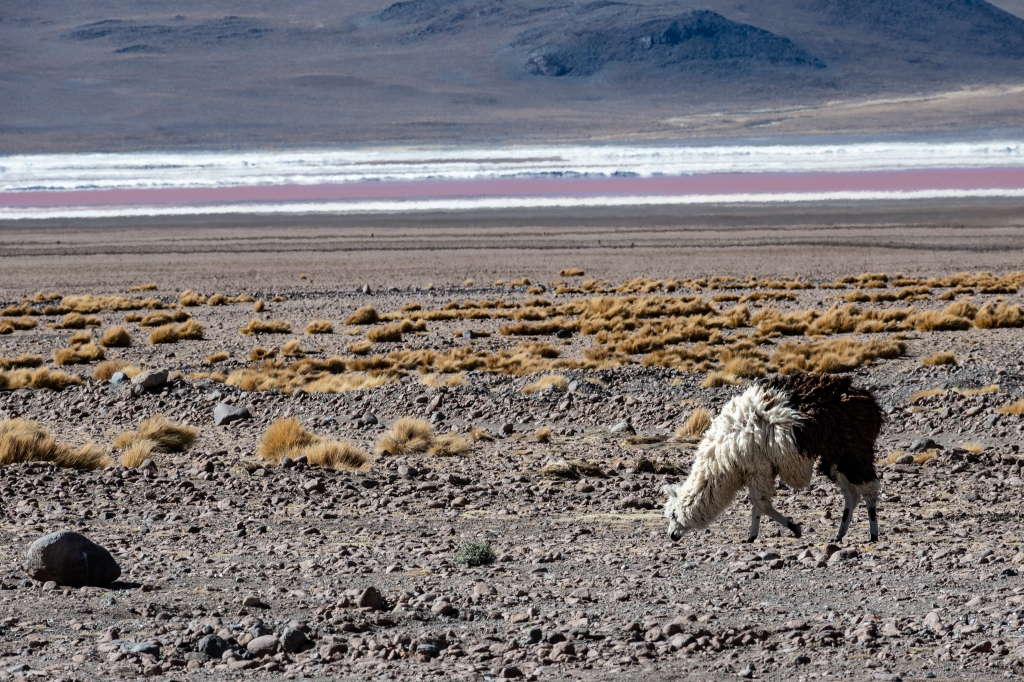




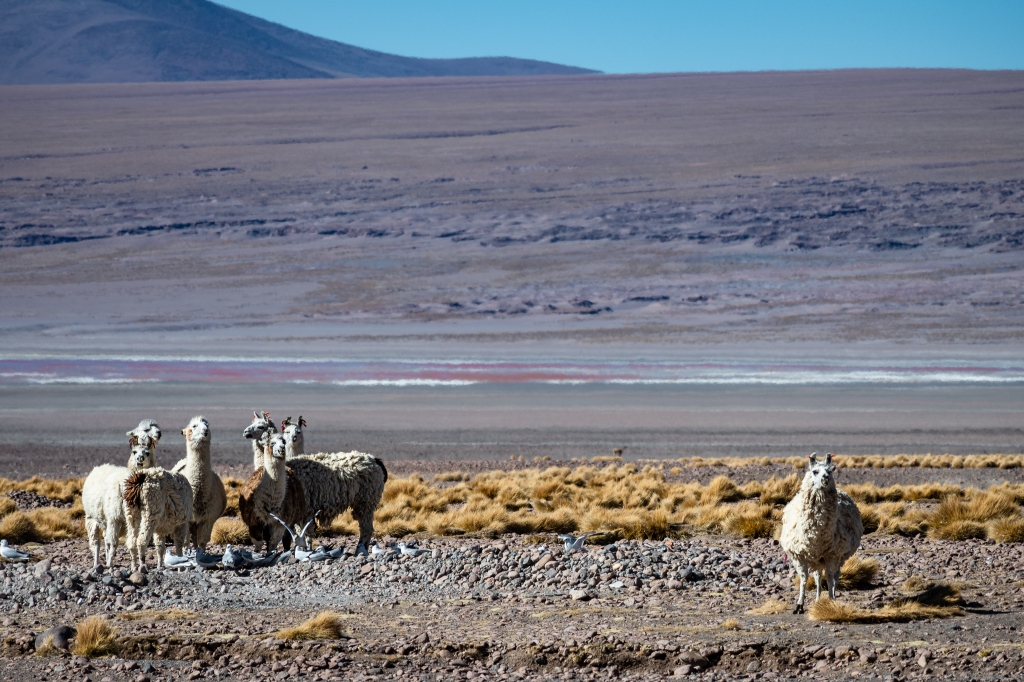



More long sand tracks on our way to Uyuni. Frankly, we’re both a bit exhausted. It’s been tough riding. Incredible how the Husky has lost performance. She’s only had a fraction of her usually power in recent days. Luckily she has EFI (Electronic Fuel Injection). On a carburated bike this all would have been more challenging.
The last 100km to Uyuni. We’re back to good tracks & even paved roads. How easy travel can be. We stop at the first petrol station & are waved to the front of the queue. I chat with the elderly gentlemen (owner of the petrol station). The Husky is fully fueled up at the local price.


One night in Uyuni. We ride on the Salar de Uyuni passing hundreds of Landcruisers hauling tourists onto this salt flat. This is the third salt flat we’re visiting on our trip, following Danakil (Ethiopia) & Makgadikgadi (Botswana). Uyuni is the largest one of the three, beautiful & impressive. But again, larger doesn’t necessarily mean better. The experience felt much more authentic on the other two salt flats.




Although having covered all the exposed parts with WD40, I immediately have the Husky washed down after having ridden on the salt. A woman blasts water over her with fire hose type of equipment. I constantly tell the woman not to blast water into the center of the Husky where all the electronic plugs are. She answers “sí, sí” but doesn’t really seem to care. Luckily no water damage this time. We’re off to “Potosí”.


Potosí is a town rich in Spanish heritage. A former silver mining town, 60% of global silver was mined here during the 16th century. We’re just in time to wander the town before sunset & enjoy the contrasts of old Spanish architecture & modern Bolivian culture.

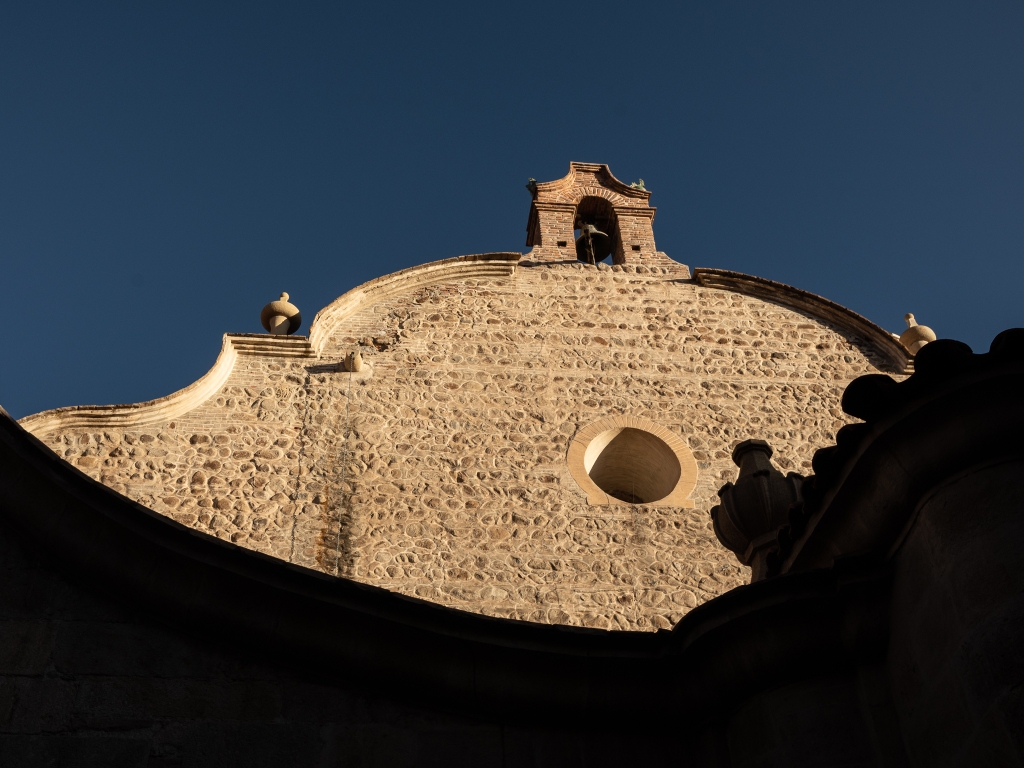








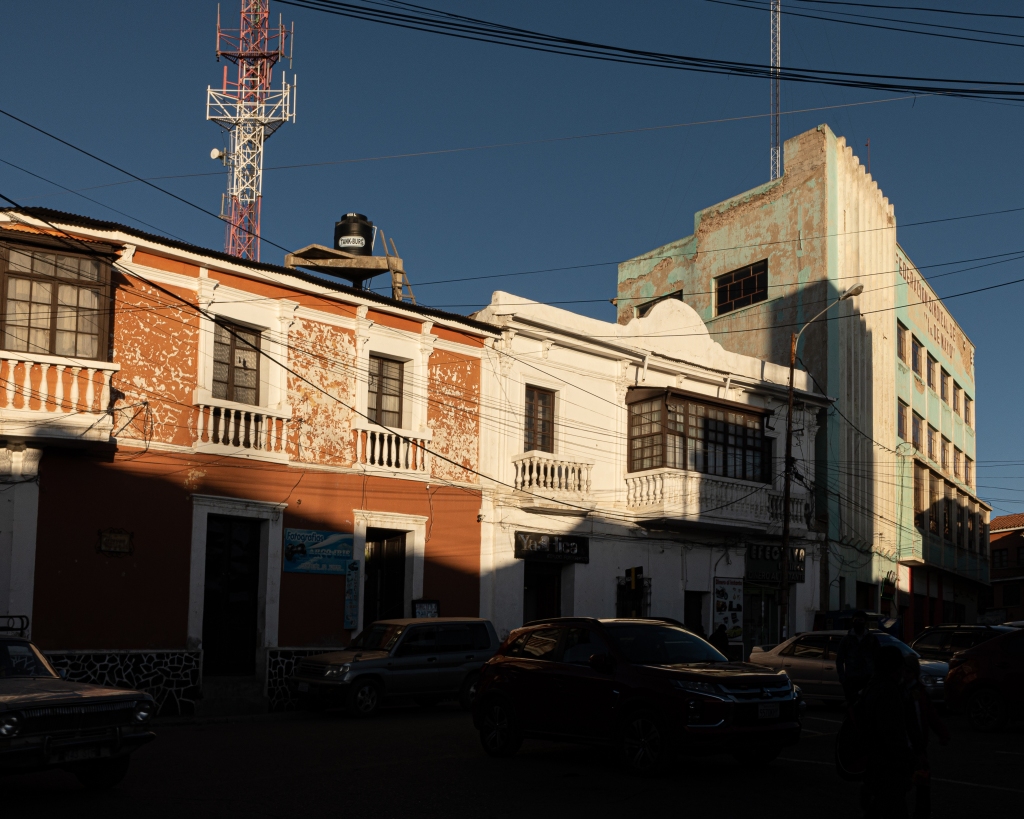


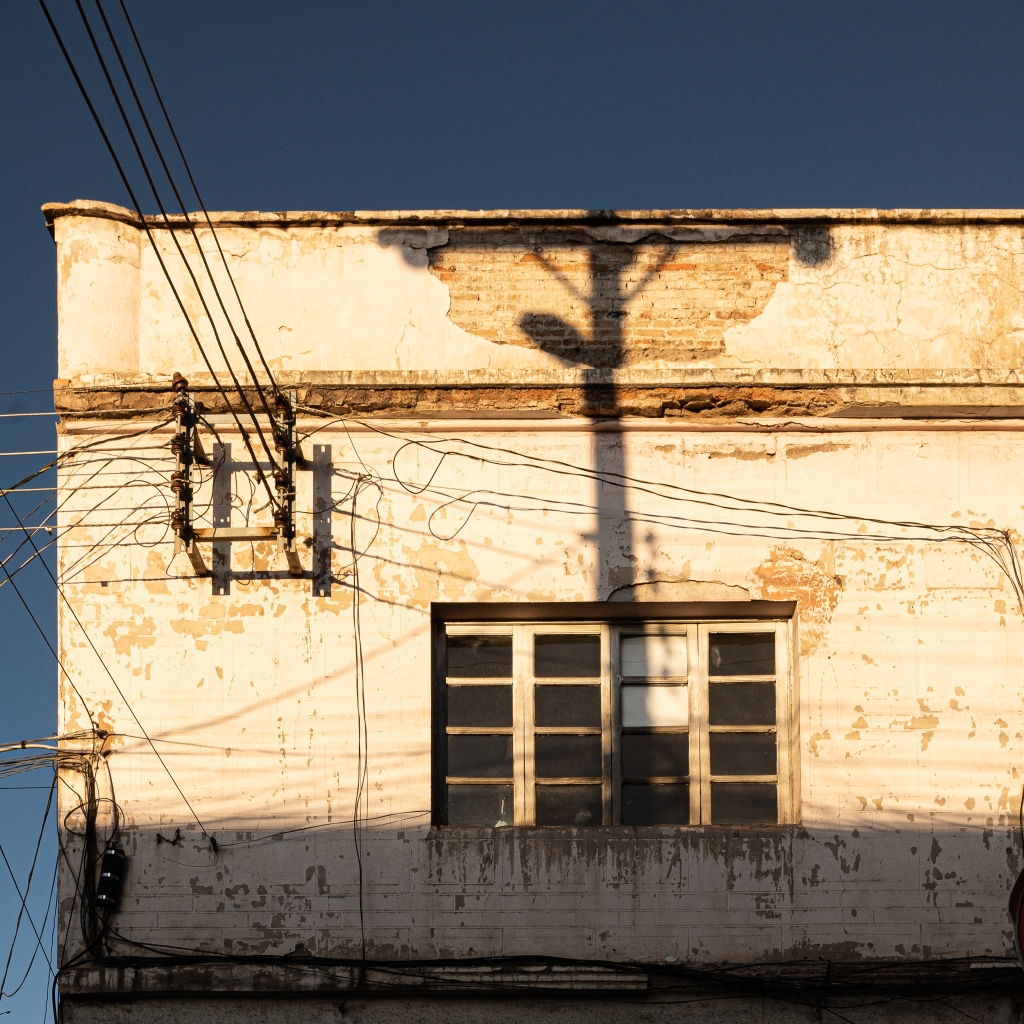




While departing town, there are protests in Potosí. Some of the roads are blocked. These old towns are labyrinths of narrow one way streets & it really is a bit of a challenge to find your way out on alternative routes. Narrow back streets lead us out of town & we cruise towards Sucre.
It’s now the first time we pay the official petrol price for foreigners. This gentleman has a list of prices hung up & is very familiar with the special process. No issue what so ever, at BOB 8.80 (CHF 1.20) the price is still very competitive in a current international comparison.
Time to take a break in Sucre. This is one of the two capital cities of Bolivia (the other being La Paz). Good guesthouses & restaurants at affordable prices can be found here. Now back down to 2’600m above sea, temperatures are more pleasant. The Husky gets a good wash & cleaned air filter. I discover town & recover a bit from the South. We both re-energize.









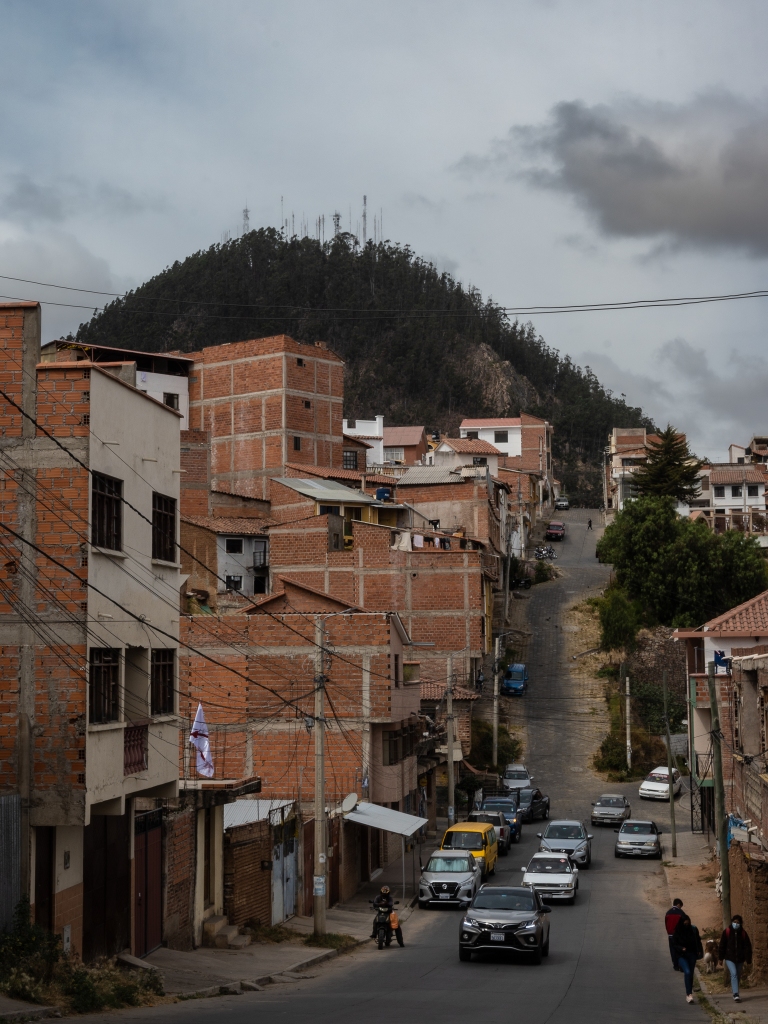







I decide to fuel up before leaving town. The lad at the petrol station is unable to cope with my request. He almost begs me to do a workaround. The workaround is renting a jerry can. There is a young boy renting out jerry cans next to the petrol station. This little man is big in business & happy to let me use one of his jerry cans for BOB 2.-. By renting the jerry can, I can buy the petrol at the local price & the lad at the petrol station isn’t officially fueling up a foreign vehicle. He, therefore, doesn’t have to go through the special process. I’m hesitant as fueling up via jerry can often results in a mess (Spilling gasoline over the Husky). It does result in a mess. Nonetheless, we have the needed fuel to continue.
Passing through Oruro, we finally descend to La Paz. Something like I’ve never seen before. A vast city in a valley, surrounded by mountains. Curvy roads lead down to town passing beneath numerous cable cars. Something seems to be happening in every dimension of this city. Quite a lot to take in in the first instance. I already like this city.
The next day we circle the city purely via cable car. This Austrian/Swiss engineered public transport system is one of a kind globally. Fast & highly efficient. There is, however, a slightly voyeuristic element to it. The cabins pass next to & above buildings. One has perfect sight into the lives of the people living there.


























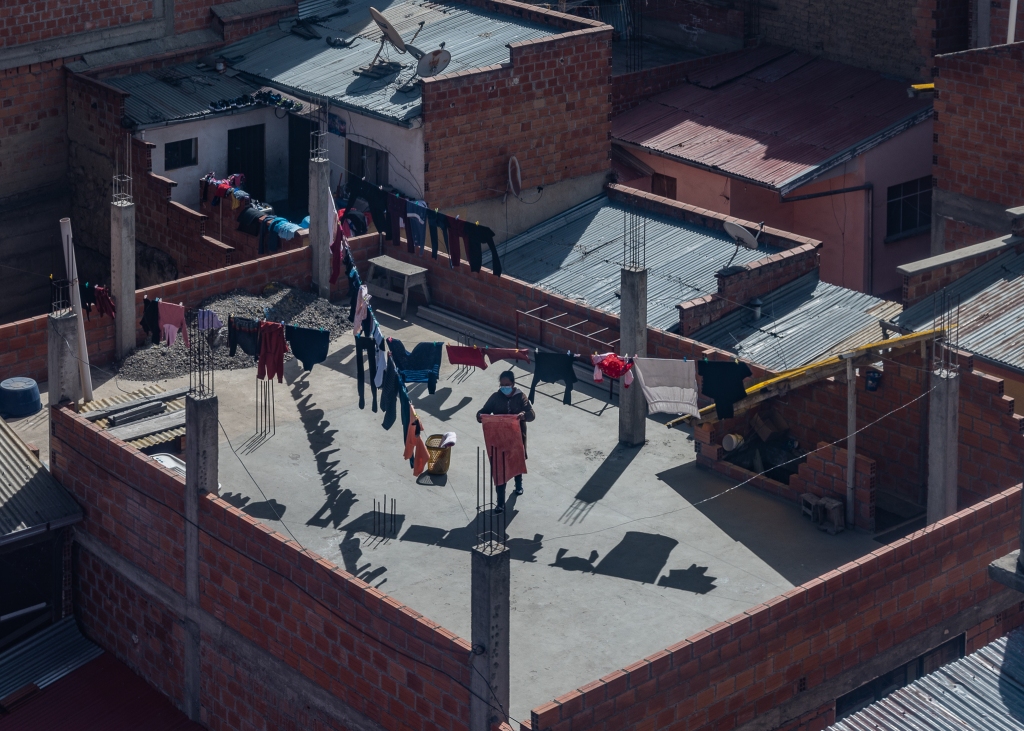

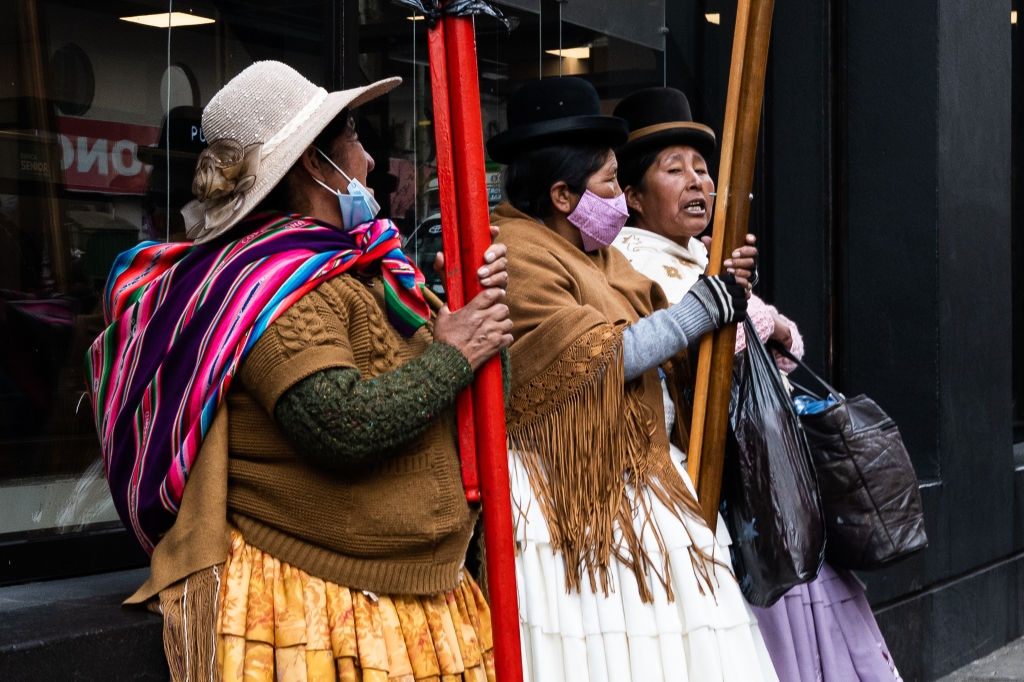
We’re heading towards the border with Peru in “Desaguadero” at lake Titicaca. Long stretches across the mountains, high plains with heavy winds, plenty of police check points. The road to the border is actually a two lane street, but clogged up with km’s of trucks heading North. Rows of three trucks next to each other & the Husky & I squeezed between them. We swivel through to the front.
We arrive at the first border post. I had read online that the immigration office & customs are a few km further on. However, here I’m told that apparently some kind of registration is needed at the first post. 30min of being sent back & forth between desks. We move on to the actual border 5km further. We were told to stop at a “health screening facility” on our way there. We ride slowly & look around, but I don’t recognize any health screening facility. Arriving at immigration I explain my situation to the officer. Luckily the officer is willing to make an exception & we receive the entry stamp. Customs is a bit more challenging & it’s been a while since my luggage has been searched. All is fine though & we enter Peru.
Along lake Titicaca, through Puno to Cusco we go. Cusco is a town which was formed by the Incas & developed by the Spanish during the imperialist period. This is the starting point for most tourists to visit Machu Picchu. Nice hostels, excellent food, touristy, high prices. It’s worth it though. This city really has a lot to offer.










As UNESCO world heritage, Machu Picchu is probably one of the top-tourist attractions globally. While having the rational of protecting sites, the “UNESCO badge” also means that these places are stormed by visitors & skyrocketing prices are charged to visit them. Many pay USD 200-300.- for a tour to Machu Picchu from Cusco excl. accommodation. Officially, the only way to get there is by train. I find an alternative.
The Husky & I ride to Santa Theresa through the Valley of Kings, reaching the other side of Machu Picchu. Curvy & fun roads, across mountains with most exceptional views to get there. The final 30km are a mud track & we arrive trenched in mud, but happy.

I get up around 5:30a.m. & we cruise 12km across sand & mud up the mountains. From here it will be an 11km hike along the rail tracks to “Aguas Calientes” at the foot of Machu Picchu. I walk up, visit Machu Picchu & walk back down. 26km of walking; a long day. Quite tired, I arrive shortly before sunset at the Husky. It was worth it.




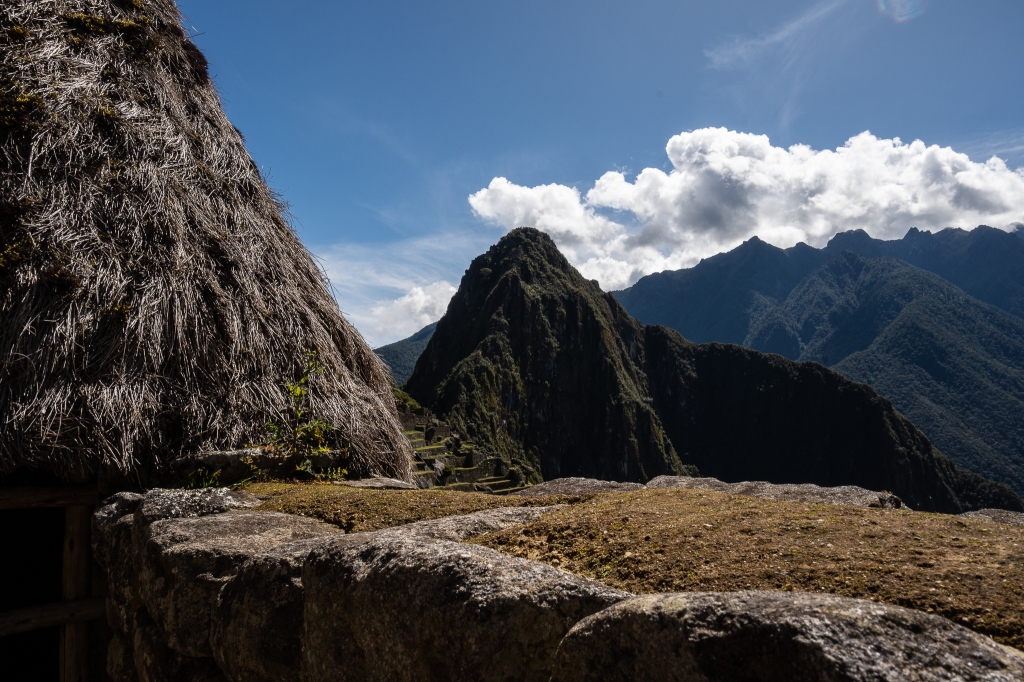



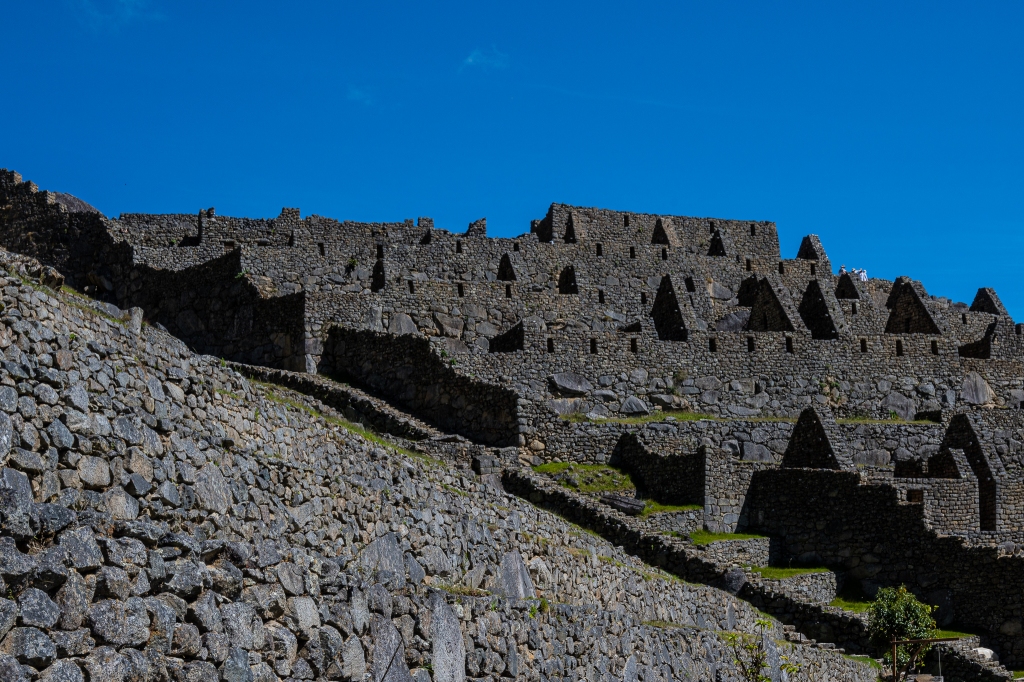








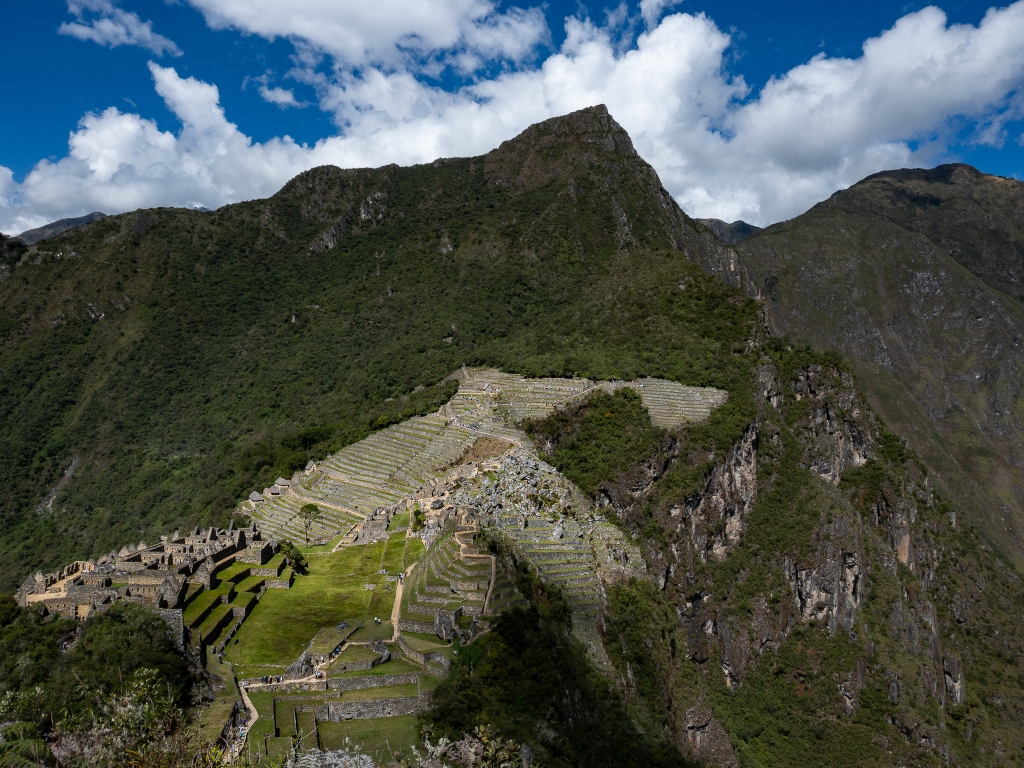












The 12km back to Santa Theresa are blocked until sunset due to construction work. I spend an hour waiting & chatting with locals. At 18:00 the road will be reopened. At 17:55 the 5 cars waiting start honking their horns, putting the lady signaling traffic under pressure. The barrier is opened & the cars race out into the dark. We let them pass, having learnt about the offensive driving behavior of Peruvians.
Peru is now the 36th country the Husky & I are touching ground in. In the minority of countries has adhering to traffic laws been a priority. Although it might have seemed chaotic at times, I always very much enjoyed driving in these circumstances. You just go with the flow. People would do crazy driving maneuvers but always look out for others while doing so. They would apologize if having done something wrong. Not so in Peru. Changing directions w/o looking is the norm. Cutting corners a usual practice. Standing in traffic jams & honking the horn uninterruptedly a custom. Forcefully squeezing others common. The law of the stronger is in full force. No one watches out for others. It’s anarchy.
Being defensive in this type of environment is not the right tactic. You’ll simply go under. Keeping your distance & darting past uncontrolled drivers when given the opportunity has worked well for us. Now the bunch of aggressive drivers has reached the heavily potholed sections of the track & are blinded by all the dust being raised. The Husky & I sneak past & descend to Santa Theresa.
Heading further North across a mix of tarmac, sand & mud roads. We ride through “Kiteni” to “Kimbiri”. We’re passing through the Amazon. Dense jungle, little civilization, rising temperatures. It’s absolutely beautiful. Generally little to no traffic. No tourists.
Up to a few years ago this area has been struggling with a socialist/marxist guerilla organization (Shining Path), which would regularly attack government institutions. Since quite a while this organization is not active anymore. That is, it’s former members are now apparently primarily active in drug trafficking. Crime levels are relatively low though, especially compared to larger cities we’ve been to. Police & military are very present & search vehicles in the middle of nowhere. We’re no exception.







Sleeping in “Ayacucho” & “Pisco” at the Pacific coast, we’re now darting towards Lima. On route, in some instances I would be freezing at 4’500m above sea level & warming up (almost sweating) in hot valleys with cacti 30min later. The landscapes completely change every few km. Within 2h we descend from above 4’000m to sea level. We’re enjoying the ride. I had almost forgotten how swift the Husky is under normal circumstances.




I’m reducing the Husky’s standard service interval (10’000km) & giving her some fresh oil & filters at 8’000km. It has been rough on her & she deserves a special treatment. Her clutch has been starting to feel a bit strange. We’ll have a look at that too.
I would have gotten some more km out of the clutch but it’s not looking great. Much easier to replace it during the oil change than on the trail in the middle of nowhere. It’s Tuesday evening & I will be able to pick the Husky up again on Saturday. Some time off for the both of us. Some time to discover Lima.












It’s Saturday. I’ve been told that I can drop in to pick up the Husky until 14:00. Online the opening hours are until 18:00. At the door it says 13:00. It’s 11:50 & the workshop is closed. No one around, no one answering the phone. I come to the conclusion that there is a reason why the same word is used for “waiting” & “hoping” in Spanish (=Esperar). There always is an element of hoping for a good outcome when waiting for things around here.
The mechanics apologize sincerely. They had headed out to the desert for a ride. It’s now Monday. The Husky & I are reunited & heading further North.
We pass through Trujillo & Barranca to Pimentel (Chiclayo). On our way we’re flagged down by the police & pass check points occasionally. In one town we follow all the other motorcycles across a gravel path in order to pass a traffic light & bypass a long queue of trucks. A few km later a policeman on a motorcycle stops us. He’s furious. It seems only locals are allowed to take this shortcut. Different rules seem to apply to gringos.
The Policeman repeatedly says that I will be fined PEN 1’150.- (=Peruvian Soles) which equals to CHF 288.-. Apparently we will not be allowed to leave the country w/o paying this fine. A hefty fine considering local price levels. It all seams a bit orchestrated. Nonetheless, there is not much I can do; I’m not in the greatest position to negotiate. After having heard the same statement repeatedly, I ask him to issue the “bolecito” (fine) so we can move on. I add that this situation is unfortunate & will be a negative memory of Peru to me. He takes our documents, walks to his bike & opens the pannier to take out his pad. He pauses, closes the pannier again, walks back & gives me our documents back. He says he doesn’t want me to have any bad memories of Peru. We continue & take the final stretch to “Pimentel”.























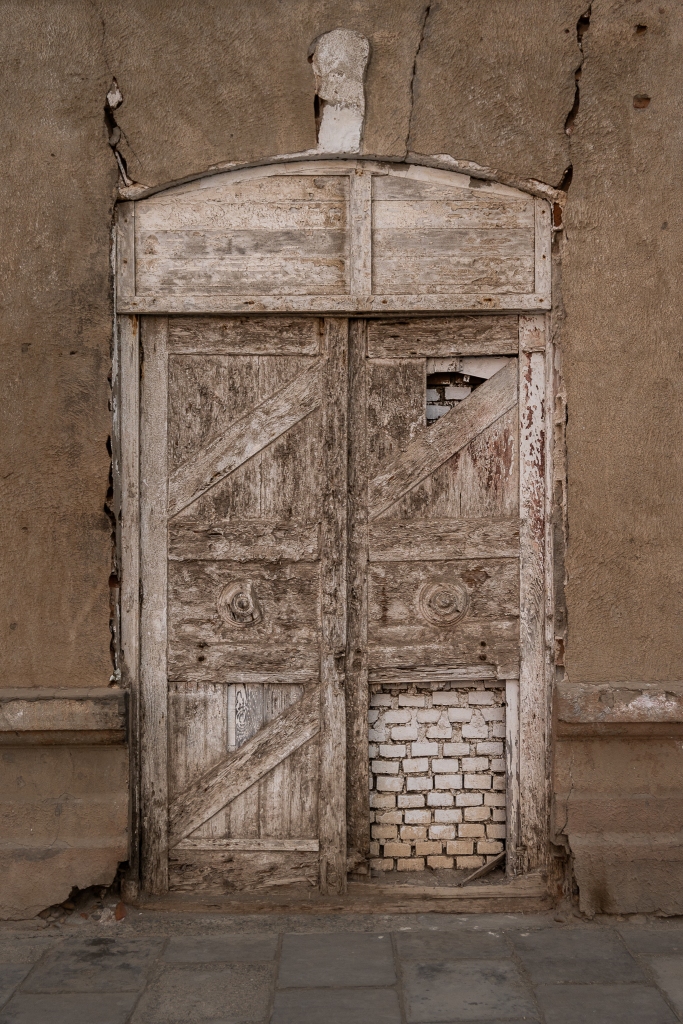


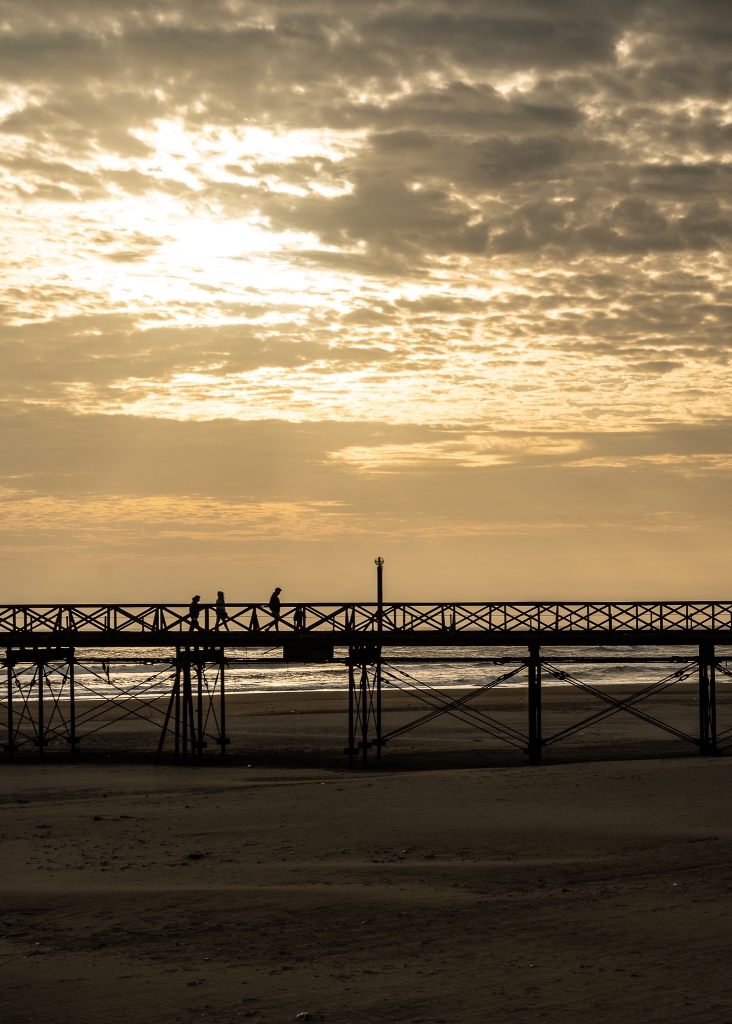

Here we are, fairly close to the border of Ecuador. We have been here for a week now, closely observing developments in the neighboring country. In the last 18 days passing through Ecuador has not been an option. The country has been paralyzed by violent protests & blocked roads during a “Paro Nacional” (National Strike). The indigenous population is putting pressure on the government to fulfill their demands. These road blocks are spread across the country. They cannot be passed & have caused shortages of food, petrol & medicine in some cities, among others Quito, the Capital.
At the beginning of the week the outlook was improving & then worsened again. The negotiations came to a halt. It became a dead end. It is now uncertain how long the situation will persist & what the outcome will be. I’ve checked all options, but unfortunately, no way North leads past Ecuador. Furthermore, no way leads past the road blocks in Ecuador. I’ve decided to give it some time.







So far many routes, buying fuel, passing protests & dealing with the police haven’t been as bad as it is often said. It seems it’s all relative. It also very much seems to depend on the perspective one takes in & to which degree one comprehends why these things happen. Understanding root-causes & being willing to accept the circumstances is key.
Assessing a situation like the one we’re facing now is, however, not easy. Spectacular headlines, intimidating stories & scary images get the most clicks. Again, all the information received must be relativised & put into perspective. Moreover, understanding the perspectives of all involved & deducting implications for oneself is key. A conflict between two parties may not be a direct risk for an overland traveler. Currently it has been physically impossible to cross the country. Nevertheless, usually it’s all relative & very much depends on the perspective one takes in.
Today the negotiations were re-initiated in Ecuador. The news has arrived that an agreement has been reached. The “Paro Nacional” will be suspended. Just as quickly as these situations erupt & escalate, they can settle again. I assess Ecuador to be passable again soon. We’ll give it another day for the situation to calm down before we head towards the border. We’ll continue our travels North. And I’ll maintain a relative perspective on developments as we move on.

Wunderschöni Föteli und absolut spannends “Lesefutter”!! Heb der Sorg ufem wiitere Weg!!
Sis
LikeLike
Danke vill mal Sis! Gnüssed dä wiiti Nordä & saludos vo änne am Teich! Bro
LikeLike
Hie man hope you are doing well send me the photos for Zambia when we met at Manda hill mall
LikeLike